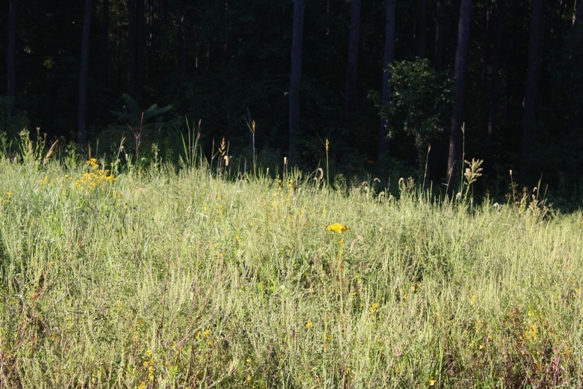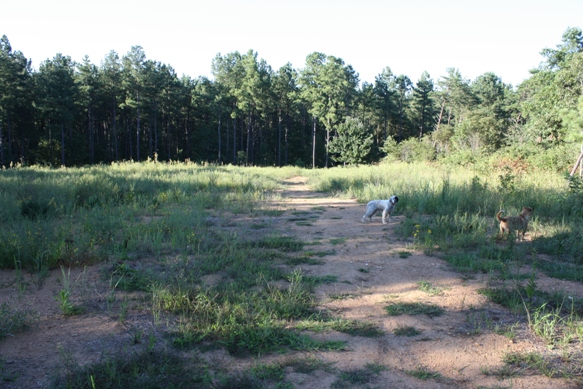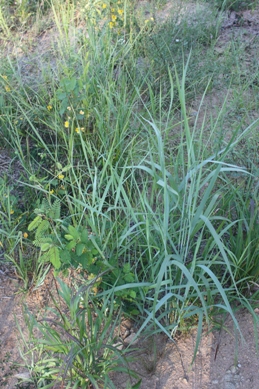… Remember, Only YOU Can Create Quail Habitat!
Today’s existing situation with the federal government brings a story to mind.
A couple of years ago we were conducting a requested quail management workshop in eastern Virginia (county not named to protect the guilty). We

had a good crowd of about 80 or 90 and when it came my turn to speak I said, “Don’t sit around and wait for the government to come do it for you, only you can create quail habitat. (That was my “play” on Smokey the Bear’s “only YOU can prevent wildfires.”)
A middle-aged lady in the back of the room responded by jumping up and shouting “YEAH!!! Don’t wait for the d**n government to do it! Get up and get it done yourself!!!”
After which followed a lot shouts of “Amen!” and “You tell ‘em sister,” along with applause.
As a government employee working in this field of conservation, I’d first like to say no one works harder, or is more dedicated, than the thousands of government employees who perhaps forgo higher paying jobs in the private sector to lead a life of community service. The government employees I work with don’t refer to their work as “jobs,” but rather as “careers,” or vocations to which they are called by heartfelt passion.
That said, in our role as wildlife biologists there are too few of us, too widely scattered to come to your farm and do the work ourselves. Our role is that of the enabler, the facilitator and the educator. We provide the landowner the know-how, the tools, the means and sometimes the funds to get habitat work done on their land. Ultimately, whether or not quail and their habitat associates make a meaningful return to the landscape is up to the landowners whose properties — big, medium and small — make up the bulk of our country.
“Remember, only YOU can create quail habitat!” And on that note, what follows is a description of my own small contribution.
I conducted my own little habitat project this spring and summer. Last year, we had our pine timber thinned. The resulting logging deck provided an opening of about ¾ of an acre, maybe an acre, upon which to try something.
The loggers did a good job of cleaning the deck off and helping me prevent erosion, but the resulting surface would have made for a nice clay court tennis match. As soon as the loggers cleared out last summer, I broadcast-planted a cover crop of brown-top millet and buckwheat to help prevent erosion, to provide a little food and cover for wildlife and to start rebuilding the soil.

It did better than I expected. The impressions left by the dozer tracks seemed to hold seed and moisture and by fall I had a nice stand that was attracting doves. By spring, however, the plantings had thinned down and little cover remained. I decided to try a native warm season grass and forb planting in an attempt to create my own small wildlife meadow.
Now, I have no equipment other than hand tools, and can’t afford a tractor or disc, so what could I do with what I had? As my Dad has always said – “do the best you can with what you got.” For me that meant planting with a standard walk-behind broadcast lawn seeder. I obtained a 25lb mix of “floor sweepings” from a reputable native grass company with a guarantee that there were no invasives or other unwanted seeds in it.
I could identify many of the seeds, but not all. I saw indiangrass, switchgrass, big and little bluestem seed, along with some partridge pea and then a few wildflower seeds I didn’t recognize. Since I expected poor germination, I planted the entire 25 lbs on March 7, just before a forecast rain. And since I had no way of working the seed into the soil, I also covered the entire area with wheat straw – about 30 to 40 bales total — spread at a moderate coverage level to help hold the seed in place and hold moisture for germination. And then I waited.
Initially it appeared the stand would be a failure – well, at least a failure of what I planted, because there was plenty of ragweed and other plants resulting from the soil’s native seed bank. And since this was a wildlife planting, I was happy to see those native weeds that quail need to thrive. This is an important note to all of you who are considering a planting of native grasses and wild flowers for wildlife – you do not want a pure stand of grasses. You need the mixture of annual forbs and legumes along with the grasses to be truly successful for quail.
Well, as the summer progressed I began to notice that germination had actually been pretty good and I started to see a good bit of partridge pea, some black-eyed Susans, a handful of cosmos, lots of native tick seed sunflowers…and a bunch (pardon the pun) of native grasses popping up through the ragweed. The area ended up being almost perfect from a quail’s point-of-view. There is a fantastic mixture of native grasses, legumes and forbs, and there is 40 – 60% bare ground underneath it all. As you know – quail need this bare ground to increase their mobility and their ability to find seeds and insects. Throw in some nearby thickets for escape cover and all my patch lacks is size.

It is already loaded with pollinating insects and many songbirds, and I’m hopeful a quail covey might someday find and use it at least part of the year. This area will serve as a seed source as I expand my habitat by conducting understory burning in the surrounding pines (hopefully – pending funds).
So can small landowners help? Absolutely! And don’t forget the sheer enjoyment of a project like this. There is nothing like some physical labor that you can see the results of to cure those “office desk jockey blues.”
–October 3, 2013


